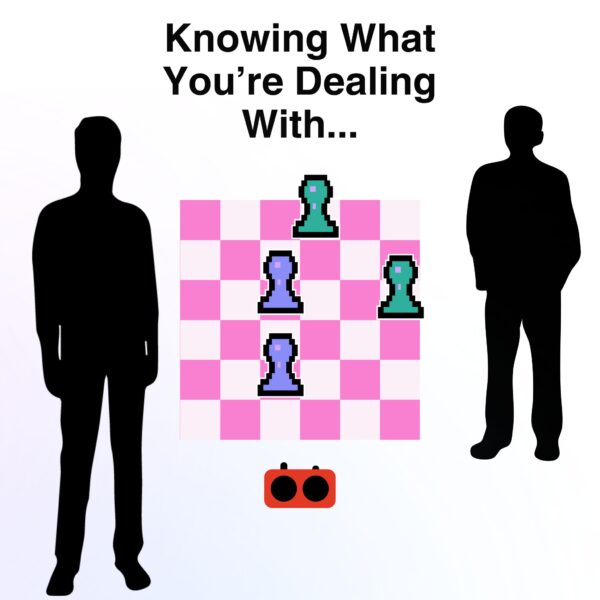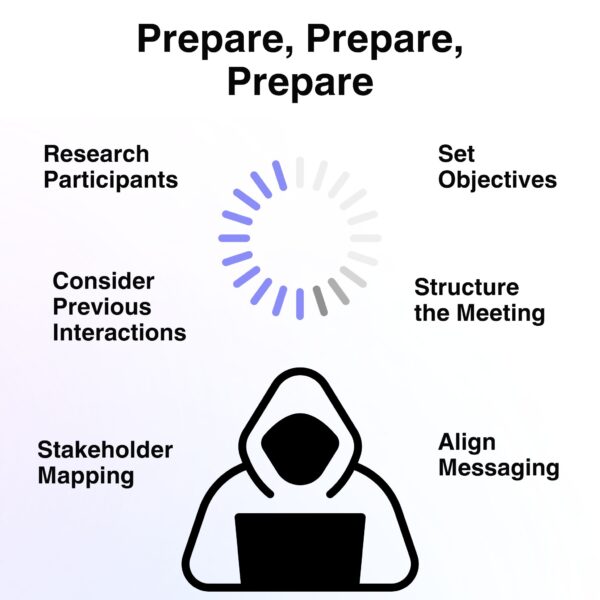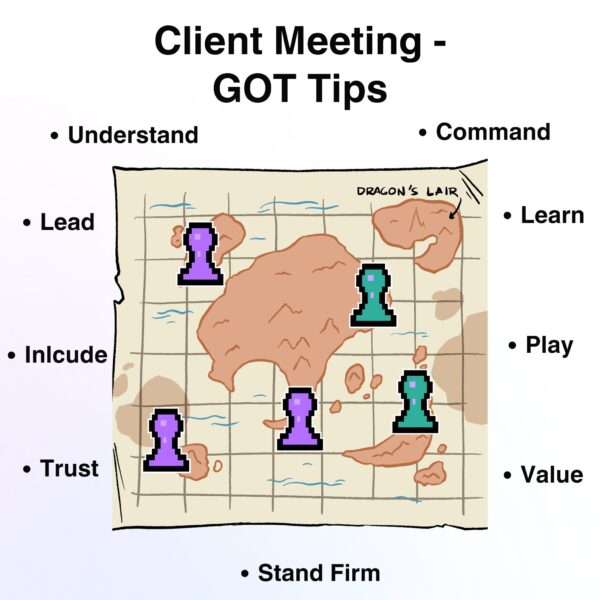Ever walked into a client meeting with your stomach in knots, hoping the conversation won’t spiral into finger-pointing, raised voices, or awkward silence? You’re not alone. Difficult client touch base calls are a fact of professional life—and how you handle them can define your reputation and the future of the relationship. But here’s the good news: with the right approach, even the most tense encounter can become an opportunity to build trust, solve problems, and turn skeptics into champions.
It’s easy to think you’re the only one who dreads a tough meeting, but nearly every professional has been there—sweaty palms, racing thoughts, and that quiet hope things won’t go sideways. The truth is, challenging conversations are inevitable whenever you’re meeting with clients What separates top performers isn’t that they avoid conflict, but that they know how to turn tense moments into opportunities for connection, clarity, and progress. With the right strategies, you can walk into any client interaction with more confidence.
Below, you’ll find five proven strategies—each backed by research and real-world experience—to help you transform your client relationships, or any time you’re meeting with clients, from a potential minefield into a launchpad for collaboration.
Why Client Meetings Become Difficult
Before you can fix a problem, you need to understand it. Most challenging customer meetings don’t happen by accident—they’re the result of misaligned expectations, communication breakdowns, or underlying issues with the product or service itself. Many argue that client dissatisfaction serves as a primary catalyst for tension, often stemming from deficiencies in customer service or product quality. Which makes a lot of sense in transactional relationships; one party agrees to pay for something, and the other party agrees to provide a great experience.
If either party fails to complete their part of the agreement or delays its completion, it’s only natural for issues to come up. Why? Because if someone feels like the situation is unfair, something is probably messing up the balance…
It’s also important to recognize the types of conflict that can erupt:
- Task conflicts (about scope, deadlines, resources)
- Relationship conflicts (personality clashes, emotional baggage)
- Value conflicts (differences in priorities or beliefs)
As Harvard experts note,
“Conflicts can be broadly categorized into three main types: task, relationship, and value conflicts” – Harvard

Knowing what you’re dealing with is half the battle—whether it’s a customer touch base meeting, or any situation where you’re speaking with project stakeholders…
Here’s a clear, actionable table summarizing the three main types of conflict in client interactions (task, relationship, and value conflicts) with practical example scenarios and solutions. All insights and structure are drawn from Program on Negotiation at Harvard Law School:
Common Types of Conflict
| Type of Conflict | Typical Scenario in Client/Customer Meetings | Example Scenario | Practical Solutions |
|---|---|---|---|
| Task Conflict | Disagreements about project scope, deliverables, deadlines, resource allocation, or interpretations of facts | Two team members argue over who should present in a meeting, both wanting credit for a key deliverable. | – Encourage open, active listening – Have a neutral manager mediate – Brainstorm solutions together – Focus on underlying interests, not just positions – Develop agreements collaboratively so all parties buy in |
| Relationship Conflict | Personality clashes, differences in working or communication styles, emotional baggage, or simmering tensions | A client feels slighted by a project manager’s curt email tone, leading to escalating tension in meetings. | – Invite the other party for an informal conversation (e.g., coffee or lunch) – Focus on building rapport and discovering common ground – Bring up sources of tension directly but with empathy – Listen without arguing – If unresolved, involve a manager or third party |
| Value Conflict | Differences in core values, ethics, politics, identity, or organizational norms (can include identity or cultural issues) | A client requests a marketing campaign that your team feels is ethically questionable or clashes with your brand values. | – Aim for mutual understanding and respect through dialogue – Avoid trying to “win” on values; instead, seek cognitive understanding of the other’s perspective – Reframe the conflict around shared universal values where possible – Sometimes, agree to disagree and focus on practical collaboration where possible |
Navigating a client meeting—whether it’s your first or your fiftieth—can feel a lot like stepping onto a stage: there’s pressure, high expectations, and more than a few unknowns. But consistent success isn’t about luck; it’s about preparation and having the right playbook. The following five strategies are designed to help you proactively prepare, communicate with empathy, set healthy boundaries, leverage technology, and build trust—so every client encounter when you’re meeting with clients moves you closer to your goals and builds stronger partnerships.
Strategy 1 – Prepare Proactively Before the Call
No one ever regretted being overprepared for a client call. Start by researching everyone who’ll be in the room—not just their job titles, but their interests, concerns, and how they’ve interacted with your team before. It is essential to gather extensive information about all potential stakeholders. Stakeholder mapping tools (or even a simple spreadsheet) can help you anticipate objections and align your messaging for any type of meeting with clients.
Next, set a clear, focused agenda and share it ahead of time—this is just as important for a recurring customer meeting as for an initial meeting. A clear, focused agenda serves as the blueprint for the meeting, providing structure to the discussion. This not only keeps things on track but signals respect for everyone’s time.

Strategy 2 – Master In-Meeting Communication
When the customer meeting starts, your most powerful tools are your ears—and empathy. Active listening isn’t just about hearing words; it means showing the other person you truly understand their point of view, even if you disagree. The five key elements of active listening involve: paying attention, showing you’re listening, deferring judgment, responding appropriately (being respectful, candid, and honest).
Don’t forget non-verbal cues: body language, facial expressions, and tone of voice account for 70–93% of communication. Maintaining eye contact, nodding, and keeping an open posture can help diffuse tension before it starts—this is essential whether you’re meeting with clients virtually or in person.
Strategy 3 – Set and Enforce Clear Boundaries
Clear boundaries are your best defense against project chaos—especially when you’re managing multiple ongoing customer touchbase meetings. Before work begins, define the scope, timeline, and deliverables in writing. Meticulous upfront definition of the scope of work, establishment of realistic timelines, and clear outlining of deliverables … can significantly prevent or mitigate many common conflict scenarios.
Be prepared to address scope creep and payment issues, too. These are classic sources of friction—especially in project-based work and long-term customer meetings. When things drift, refer back to the original agreement, and don’t be afraid to reset expectations in your next client meeting.
Strategy 4 – Leverage AI and Technology
Let’s face it: even the pros need backup, especially when meeting with clients under pressure or juggling several customer meetings a week. This is where AI-powered tools can make all the difference. Use them to automate stakeholder research, optimize agendas, and even predict which clients might be at risk of “churning”.
During a meeting, AI can offer real-time sentiment analysis and live coaching. For example; AI, utilizing NLP and Machine Learning (ML), can interpret the emotional tone within textual data from chats and emails, and even vocal characteristics … for immediate feedback. This helps you catch misunderstandings before they escalate—vital for any customer meeting.

Strategy 5 – Follow Up and Rebuild Trust
What happens after the client call or customer meeting can matter even more than what happened during it. Send a prompt, clear follow-up email recapping key decisions and next steps. Prompt and clear follow-up is essential … providing a concise summary of what was discussed, outlining clear next steps, and detailing specific action items and decisions made.
If you made a mistake in a meeting with clients, own it. Apologize, fix it, and deliver on your promises. Trust is rebuilt by consistently delivering on promises and fostering accountability.
Visual: Email follow-up template and checklist for post-meeting actions after a client meeting.
Real-World Case Studies: Tension Turned to Trust
Let’s bring it all to life. In one case, a creative agency avoided a lawsuit by proposing a joint venture instead—a solution that satisfied both parties and unlocked new opportunities. Conversely, some disputes collapse not because of the issue, but because trust is lost and no one takes the first step to rebuild it. These lessons can be applied to any customer meeting—big or small.
Visual: Before-and-after feedback quotes from real clients after tough meetings with clients.
The Client Meeting Game: Lessons from GOT
If you’ve ever watched Game of Thrones (or devoured George R.R. Martin’s A Song of Ice and Fire), you know that every meeting—whether in a candlelit council chamber or a windswept battlefield—can change the fate of kingdoms. Believe it or not, your next client call, customer meeting, or session meeting with clients might not involve dragons or sword fights, but the stakes for your business, reputation, and career can feel just as high.
Here’s how you can channel your inner Stark, Lannister, or Targaryen to transform any client interaction into a victory:
1. Trust with Caution—But Build It Deliberately:
Just like in Westeros, trust is a double-edged sword. The best leaders know not to give away everything to people they barely know, but also understand that nothing great can be built without trust. In your meetings, be open—but also discerning. Share enough to move things forward, but always protect your core interests and build mutual trust over time.
2. Lead by Example—Be the Ned Stark of the Boardroom:
Ned Stark’s word was his bond. In your customer meetings or when meeting with clients, always do what you say and say what you mean. Show up prepared, deliver on promises, and others will follow your example.
3. Play to Your Strengths—Think Like Tyrion:
Tyrion Lannister survived not by size or strength, but by knowing his unique skills and using them strategically. In every client call, know what you bring to the table—whether it’s deep technical knowledge, creativity, or the ability to read the room—and lean into it.
4. Stand Firm in Your Convictions—Channel Your Inner Tywin:
Sometimes, you have to take a stand. Tywin Lannister never wavered from his convictions, and neither should you when the stakes are high in a tense client meeting. Defend your team, your company, and your values—even if it means making tough calls.
5. Know Your Worth—Be a Daenerys:
Daenerys Targaryen started as an outsider but knew she was meant to lead. Don’t underestimate the value you and your team bring to a client or customer meeting. If you believe in your vision, others will too.
6. Take Command—Lead Like Jon Snow:
Jon Snow earned the trust of the Night’s Watch by stepping up when it mattered. In your next meeting with clients, take the initiative: guide the conversation, clarify objectives, and unite everyone toward a common goal.
7. Never Stop Learning—Grow Like Littlefinger (Petyr Baelish):
Petyr Baelish (Littlefinger) rose from nothing by constantly increasing his knowledge and networking. Every meeting with clients is a chance to learn more—about your customers, your competitors, and yourself.
8. Invest in Individual Strengths—Build a Team Like Dany or Jon:
Neither Daenerys nor Jon Snow would have survived without strong teams (think Tyrion, Missandei, Davos, Sansa). Recognize and empower the strengths of everyone in the room—even your clients—to achieve the best outcomes.
9. Your Team is Your Backbone—Don’t Go It Alone:
Just as “the lone wolf dies, but the pack survives,” rely on your team during a client touchpoint. Lean on their expertise, share the spotlight, and remember that success is always a group effort.
10. Understand the Needs of Others—Inspire Loyalty Like Jon and Dany:
The most successful leaders in Westeros inspire trust, compassion, stability, and hope. That’s true in any customer meeting too. Listen deeply, show you care, and create a sense of shared purpose.
Final thought:
Every client encounter is a new episode in your own story of ice and fire. Will you leave the table as a trusted advisor or a forgotten footnote? The good news: you don’t need a sword, a dragon, or a birthright. You just need strategy, empathy, and the courage to lead.

Read more leadership lessons from Game of Thrones here.
Applying These Strategies with Aurora Slides
Handling tough client calls and customer meetings isn’t just about what you say—it’s also about how you present your ideas. That’s where Aurora Slides comes in.
Every professional works with unstructured information every day. Meeting notes, brainstorming sessions, call transcripts, scattered emails, long form documents, and draft documents: this is the raw material of modern work. But turning this everyday data into a clear, compelling story for an audience is time-consuming, often stressful, and rarely anyone’s main job. For example, one of the biggest perks of using AI is processing long form text and being able to turn it into an easier to digest document. At Aurora’s Learning Vault you can read blogs that will teach you specifically how to properly use an AI PowerPoint Summarizer.
Aurora Slides cover all these setbacks. You can feed it content in any form—notes, transcripts, books, or bullet points—and it instantly organizes, prioritizes, and transforms your raw info into a polished, audience-ready narrative. That means you get to focus on your message for the client encounter not worry about formatting. You should look into learning more about you could use prompts for generating powerpoint slides from a manuscript.
With expertly crafted templates, anyone can create a visually stunning, on-brand presentation in minutes, not hours—no design skills needed. Whether you’re prepping for a high-stakes meeting or sharing an impromptu update in a customer meeting, Aurora Slides helps you look like a pro under pressure.
Editing is as easy as chatting: tell Aurora Slides what you want in your own words, and it responds instantly, turning your feedback into tangible results—just like a human assistant would. You control permissions for team and clients, sharing securely and instantly via public links.
Even better, you can define your audience and goals upfront; Aurora Slides tailors the narrative and visuals for maximum relevance and impact. So you’re not just prepared for your next customer meeting—you’re ready to win.
Dialogue Examples: What Great Client Meetings Sound Like
Inspired by the YouTube video “10 Business Scene Conversations”… No matter how well you prepare, the real test comes in the moment—when you’re sitting across from a client, navigating tricky questions, unexpected feedback, or high-stakes negotiations. Sometimes, knowing exactly what to say (and how to say it) can be the difference between a tense standoff and a breakthrough.
Drawing inspiration from real business scenarios, here are several dialogue examples you can borrow (or adapt) for your next customer call, customer meeting, or when meeting with clients:
1. Discussing a New Project or Proposal
You:
“Good morning, Ms. Mary. Thank you for meeting with us to discuss the new software implementation for your company.”
Client:
“Good morning, Mr. Tom. I’m looking forward to hearing about the proposed solution.”
You:
“We’ve analyzed your current systems and believe our software can streamline your operations significantly.”
Client:
“That sounds promising. Could you elaborate on the specific areas where you foresee improvements?”
2. Addressing Concerns and Building Trust
Client:
“We’ve received an increasing number of complaints about response times.”
You:
“I apologize for any inconvenience this has caused. Could you provide more specific details about the complaints?”
Client:
“Customers are reporting wait times of over 30 minutes for phone support.”
You:
“I see—that’s significantly higher than our target of 5 minutes. We’ll investigate this immediately and increase staffing in our call center. Additionally, we can implement a callback system for peak hours. Would you like weekly reports on our progress?”
3. Negotiating Terms and Handling Pushback
Client:
“We were hoping for a 15% discount given our projected order volumes.”
You:
“I understand. While 15% isn’t feasible, we could potentially offer 12% with a minimum two-year commitment. Would that work for you?”
4. Presenting Results and Moving Forward
You:
“I’m pleased to report that our recent campaign resulted in a 25% increase in sales compared to the same period last year.”
Client:
“That’s impressive. Can you break down which channels were most effective?”
You:
“Certainly. Social media advertising delivered the highest ROI, followed by influencer partnerships and email marketing. We also saw a 40% increase in website traffic and a 15% improvement in average time spent on site.”
5. Resolving Disputes and Restoring Confidence
Client:
“I hope we can find a resolution to this issue.”
You:
“We take full responsibility for the delay. To make up for the inconvenience, we’re prepared to offer a 15% discount on the remaining project fees and provide three months of complimentary maintenance and support. We’re also committing to a firm deadline, with financial penalties for any further delays.”
Pro Tips for Any Client Meeting Dialogue
- Be clear and concise: Get to the point, but always remain polite.
- Acknowledge concerns: Show empathy and understanding before offering solutions.
- Offer options: Present alternatives rather than ultimatums.
- Summarize next steps: At the end of every meeting, confirm action items and timelines.
Whether you’re negotiating terms, solving problems, or simply checking in, great customer call, dialogue is about clarity, respect, and forward momentum—no dragons required.
Watch the full video here:
Frequently Asked Questions (FAQs)
What if a client gets angry in a meeting?
A: Remain calm, listen actively, and validate their feelings before responding. De-escalation starts with empathy.
How can I prepare for a high-stakes client touchpoint?
A: Research all participants; plan and set a clear agenda in advance. Think about the objective of the meeting.
What’s the best way to set boundaries with clients?
A: Get everything in writing (scope, timeline, deliverables) and refer back to these agreements as needed.
How can Aurora Slides help prepare for a client meeting or customer meeting?
A: Aurora Slides transforms scattered notes, emails, and agendas into a polished presentation so you can walk into any customer meeting feeling prepared and confident. Whether you’re meeting with clients for the first time or handling a recurring customer meeting, Aurora Slides ensures your materials are clear, organized, and visually impressive.
Can Aurora Slides be used for recurring customer encounters?
A: Absolutely! Aurora Slides is perfect for recurring customer meetings—just update your source notes or reports, and the AI can generate a fresh, tailored presentation each time. This saves hours of manual editing and keeps every customer meeting consistent and professional.
What makes Aurora Slides different from other presentation tools for client calls?
A: Aurora Slides is specifically designed to handle the chaos of real business life: unstructured info, last-minute changes, and tight deadlines. Its AI-driven approach means you can focus on the content and message for your meeting or when you’re meeting with clients, while Aurora takes care of design, structure, and storytelling—even if you’re meeting with multiple clients or stakeholders. Learn more about how to use AI get clients in our Learning Vault here.
Is Aurora Slides suitable for teams who regularly conduct meetings with clients?
A: Yes! Teams can collaborate in real time, share drafts securely with clients, and ensure that every meeting with clients—whether it’s a strategy session or a customer meeting—reflects your brand and message. Aurora’s permissions and sharing features make it easy to work together, gather feedback, and present a united front to your customers.
How does Aurora Slides tailor presentations for different types of meetings with clients?
A: When you define your audience and meeting goals (e.g., a new meeting, a quarterly customer meeting, or a project review), Aurora Slides adapts the narrative, visuals, and structure automatically. This ensures that every meeting with clients feels relevant, personalized, and impactful—no matter the context. It is also great for both the creation of a one-one-meeting template and its respective presentation.
Ready to make your next meeting with clients your best one yet? Try Aurora Slides and see the difference.
